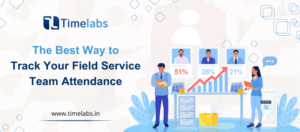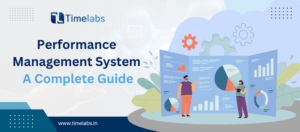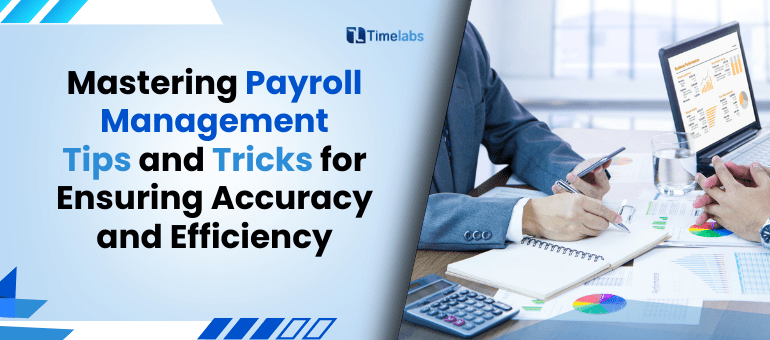Tracking employee working hours has been an essential process from time immemorial. A lot of shifts have happened during these years, for instance, the shift from traditional punch cards to the modern biometric system and access cards. Employers ensure that they keep a track of their employees by noting their in-times and out-times. Some employers even maintain timesheets for this purpose.Keeping track of employee timesheets manually is a cumbersome task. Not only employees but HRs too worry about the timely completion of the sheet. Any irregularities might cause misunderstanding and dissatisfaction among employees. Eventually, it starts taking a toll on employee productivity and morale.
A reliable employee attendance management system will help organizations eliminate compliance issues and payroll errors. This is the reason why companies are replacing paper-based timesheets with appropriate attendance management software. It helps them reduce administrative work, save time, maintain accurate records, and eliminate process bottlenecks.
 What is the attendance management software?It is the process to prevent employee time-theft by accurately tracking employee working hours, departures, login time, breaks and time-off. From punching cards to spreadsheets, organizations use multiple ways to automate attendance management. The use of biometrics is also in trend these days.What are the essential features of a time and attendance software?1. Cloud-based modelCloud-based attendance management software can help modern-age workers who don’t wish to be tied inside an office. Remote working is now a normal thing in every organization. On-premise attendance trackers will not be able to facilitate remote worker’s attendance and time.
An omnichannel, cloud-based, and always accessible system will help organizations track employee clock-in and clock-out times on the go. A time and attendance software must not be limited to the monitoring of employees. Perfect software will help the employees create rosters, send overtime alerts, missed punches, etc. It should also track the attendance of remotely working employees.2. Web-based accessWeb-based access is an essential feature of employee attendance software. It permits tracking, collecting, and storing of information. It displays up-to-date timesheets that help HR leaders to get rid of spreadsheets and paper-based filing.A centralized cloud-based time and attendance management system will increase accuracy, employee productivity, and HR efficiency. It will also ensure data integrity, reduce administrative work and lower the related costs.Such a system will display all information in a single interface. It saves HR’s time in storing, analyzing, and maintaining all records manually.3. Payroll integrationTracking employee time and attendance is a difficult task. Good time-tracking software is linked to the HR and payroll department. This will help reduce the time wasted in manually extracting data for transfer into separate software. Also, it reduces incorrect data being input from one software to another. Thus, more time can be spent on doing productive things.4. Mobile IntegrationThe software must allow mobile access too. Today’s mobile workforce needs flexibility in their hands. They should be able to punch-in through mobile, check and download reports, etc.5. Leave/absence managementPerfect software must have an individual module to track leaves. Monitoring employees’ absence is as important as tracking their presence. Whether it’s a planned leave or an urgent sick leave or travel leave, the manager should be able to easily check and reject or approve it from the portal. This will free them from the burden of manually checking emails and replying to them.Choosing a robust attendance management system will give you 360-degree visibility into employees’ working hours and help you eliminate missed punches. It can further help reduce data redundancy and save employees valuable time. The integration with other platforms is an added advantage.
What is the attendance management software?It is the process to prevent employee time-theft by accurately tracking employee working hours, departures, login time, breaks and time-off. From punching cards to spreadsheets, organizations use multiple ways to automate attendance management. The use of biometrics is also in trend these days.What are the essential features of a time and attendance software?1. Cloud-based modelCloud-based attendance management software can help modern-age workers who don’t wish to be tied inside an office. Remote working is now a normal thing in every organization. On-premise attendance trackers will not be able to facilitate remote worker’s attendance and time.
An omnichannel, cloud-based, and always accessible system will help organizations track employee clock-in and clock-out times on the go. A time and attendance software must not be limited to the monitoring of employees. Perfect software will help the employees create rosters, send overtime alerts, missed punches, etc. It should also track the attendance of remotely working employees.2. Web-based accessWeb-based access is an essential feature of employee attendance software. It permits tracking, collecting, and storing of information. It displays up-to-date timesheets that help HR leaders to get rid of spreadsheets and paper-based filing.A centralized cloud-based time and attendance management system will increase accuracy, employee productivity, and HR efficiency. It will also ensure data integrity, reduce administrative work and lower the related costs.Such a system will display all information in a single interface. It saves HR’s time in storing, analyzing, and maintaining all records manually.3. Payroll integrationTracking employee time and attendance is a difficult task. Good time-tracking software is linked to the HR and payroll department. This will help reduce the time wasted in manually extracting data for transfer into separate software. Also, it reduces incorrect data being input from one software to another. Thus, more time can be spent on doing productive things.4. Mobile IntegrationThe software must allow mobile access too. Today’s mobile workforce needs flexibility in their hands. They should be able to punch-in through mobile, check and download reports, etc.5. Leave/absence managementPerfect software must have an individual module to track leaves. Monitoring employees’ absence is as important as tracking their presence. Whether it’s a planned leave or an urgent sick leave or travel leave, the manager should be able to easily check and reject or approve it from the portal. This will free them from the burden of manually checking emails and replying to them.Choosing a robust attendance management system will give you 360-degree visibility into employees’ working hours and help you eliminate missed punches. It can further help reduce data redundancy and save employees valuable time. The integration with other platforms is an added advantage.


